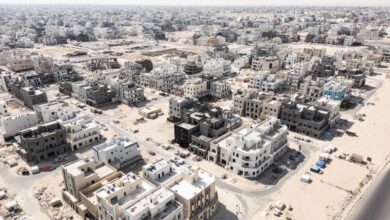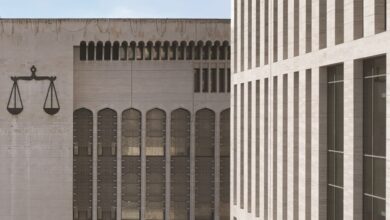
All eyes are now on Iran as the world awaits its official response to a proposal presented by U.S. envoy Steve Witkoff, which could determine the outcome of the sixth round of nuclear negotiations and potentially the future of the entire diplomatic process.
Iranian Foreign Minister Abbas Araqchi confirmed receiving “elements” of the U.S. proposal from Omani Foreign Minister Badr Al-Busaidi during a short visit to Tehran. This comes amid rising tensions between U.S. President Donald Trump and Israeli Prime Minister Benjamin Netanyahu, complicating Washington’s position as it seeks to contain Israel’s ambitions and prevent a military confrontation with Iran, reports Al-Jarida daily.
An informed source from Iran’s Foreign Ministry shared with Al-Jarida the seven main points of the American proposal:
1. International-Regional Enrichment Entity
A multinational holding company — comprising Iran, the U.S., and Gulf Arab states — would manage Iran’s uranium enrichment under IAEA supervision. Excess production would be exported, with revenues shared among the stakeholders.
2. Transfer and Management of Enrichment Facilities
Iran’s current enrichment facilities would temporarily remain operational under the holding company’s oversight. Eventually, all facilities would be relocated to an Iranian island in the Gulf—under Iranian sovereignty but subject to permanent international monitoring. Meanwhile, the U.S. may recognize Iran’s right to enrich uranium in exchange for Iran suspending enrichment entirely.
3. Interim Freeze and Comprehensive Agreement
Iran would suspend enrichment activities for a renewable one-year period, while the U.S. would pause sanctions. This would lead toward a comprehensive treaty restoring normal bilateral relations.
4. Sanctions Relief and Economic Cooperation
Sanctions would be gradually lifted as Iran complies with nuclear obligations. U.S. companies would gain phased access to the Iranian market, culminating in full sanctions removal after a final agreement.
5. International Oversight and Inspections
A joint IAEA-U.S. inspection team would conduct unannounced inspections of nuclear sites. Iran would pledge not to develop nuclear-capable missiles and agree to maintain the “trigger mechanism” from the 2015 deal, overseen exclusively by the U.S. Iran would also guarantee that released funds wouldn’t support armed groups.
6. Cessation of Hostile Regional Activities
Iran would halt hostile actions against the U.S. and Israel, stop supporting armed proxies, and ensure released funds are used solely for peaceful development. Iran would also support Middle East peace efforts and help transition pro-Iranian groups into peaceful political actors.
7. Strategic Realignment
Iran would reduce ties with China and Russia and shift toward strategic partnerships with the U.S. and Western nations. It would halt weapons supplies to Russia and avoid fueling global conflicts, including the war in Ukraine.
Iranian Response and Warning
Foreign Minister Araqchi emphasized that Iran’s reply would align with its national interests and principles. He also warned IAEA Director Rafael Grossi against any politicized use of the agency’s recent report, which criticized Tehran’s lack of cooperation and increased enrichment levels.
The outcome of Iran’s response to this proposal could be decisive for the trajectory of nuclear diplomacy in the region.













